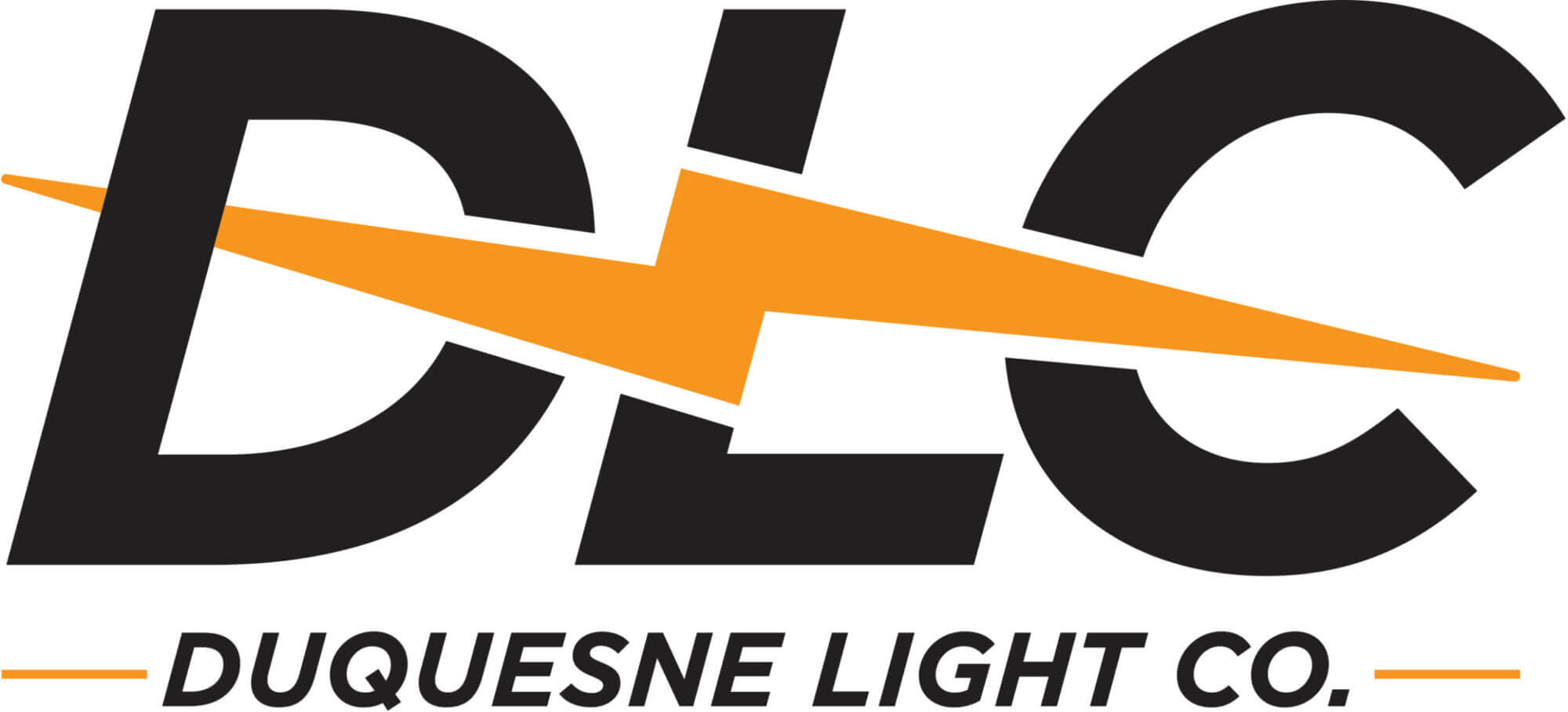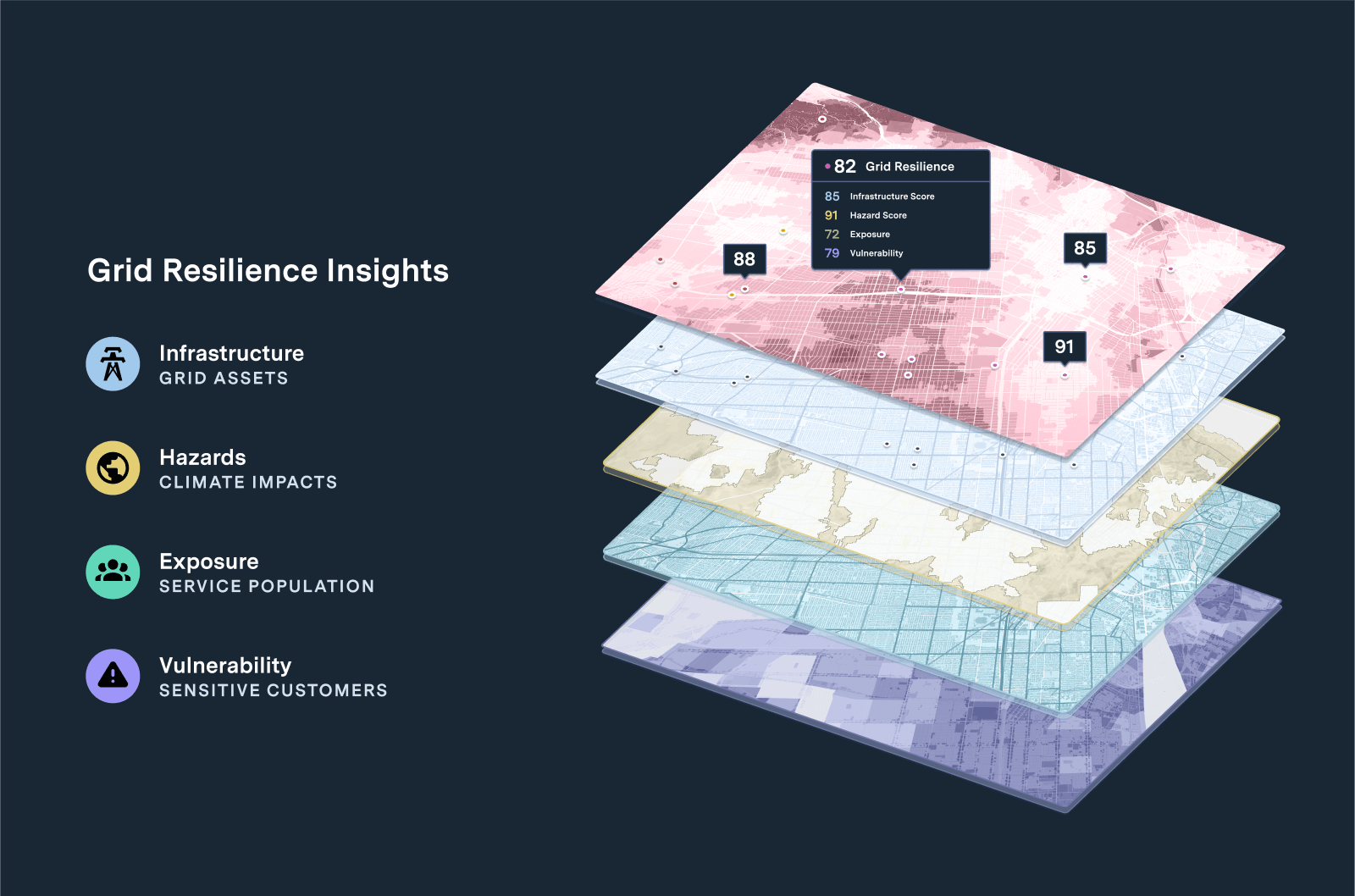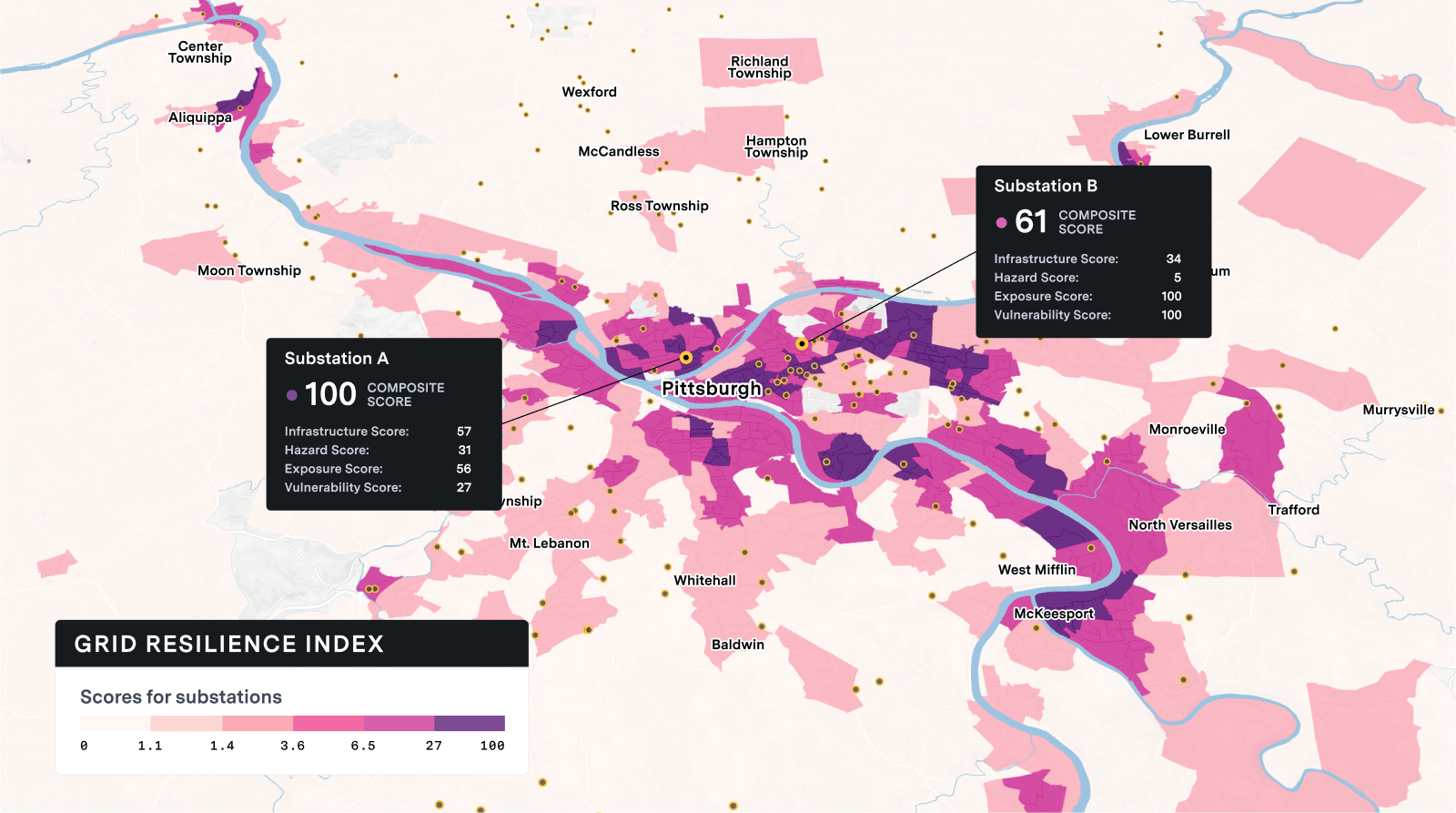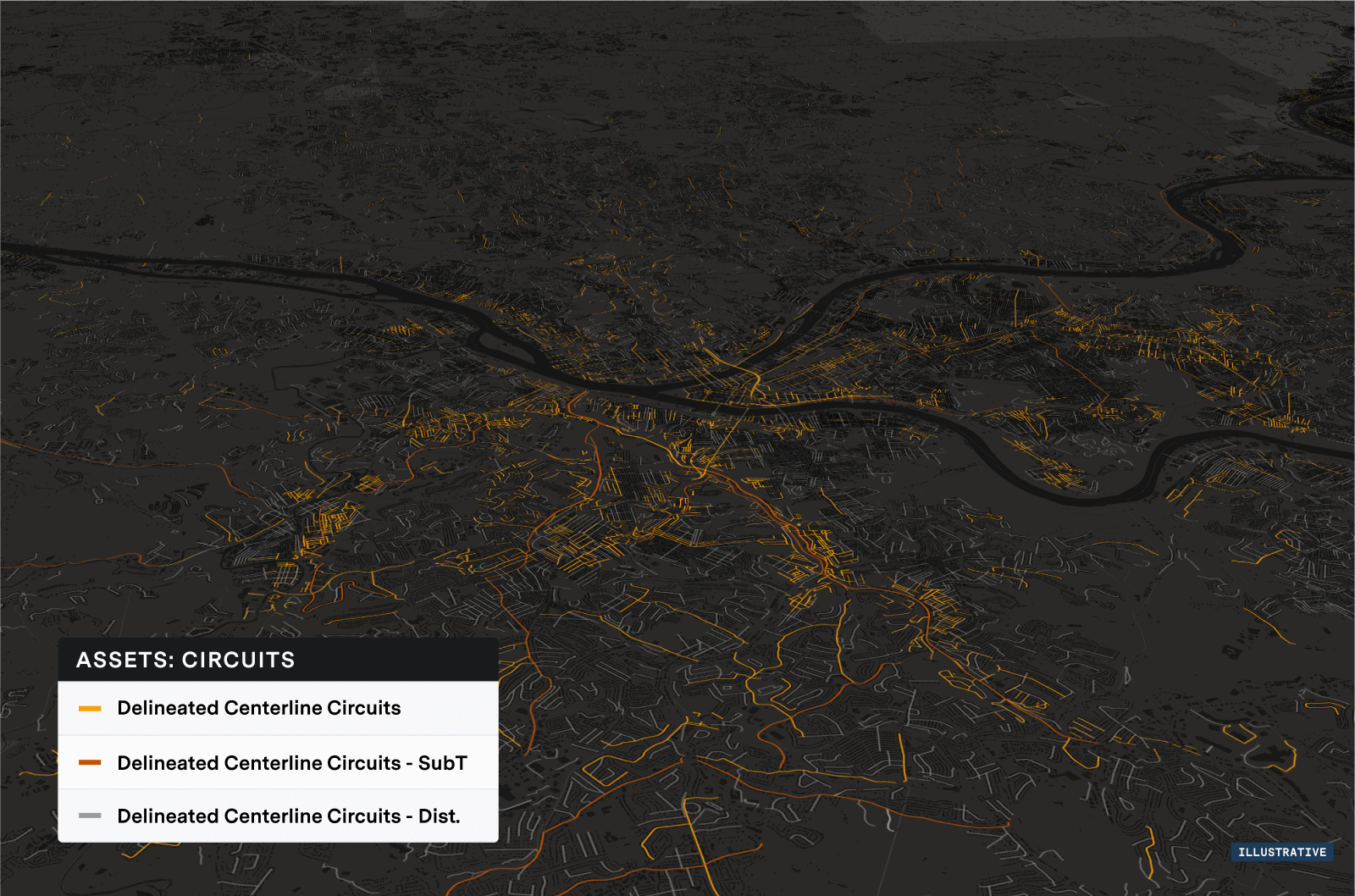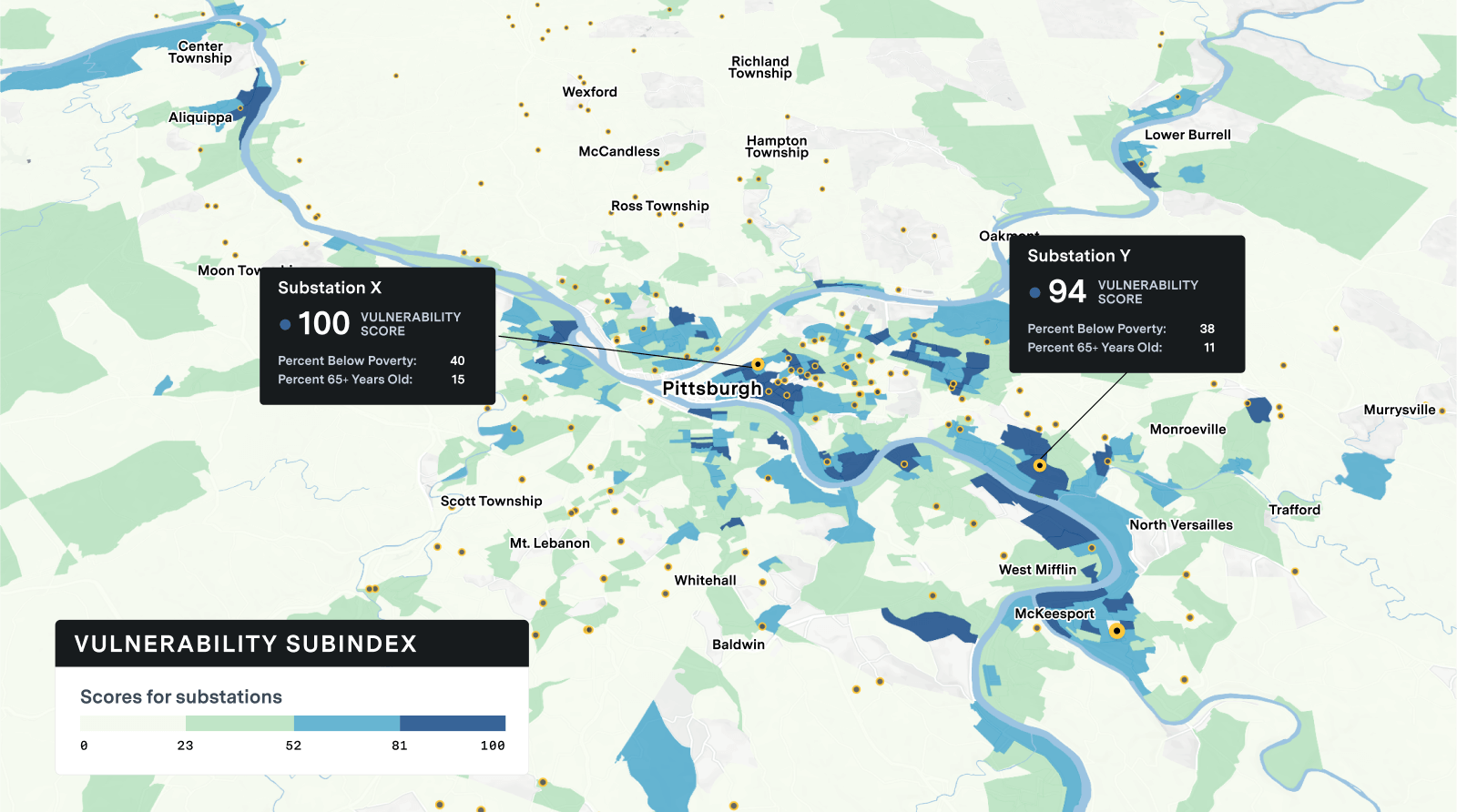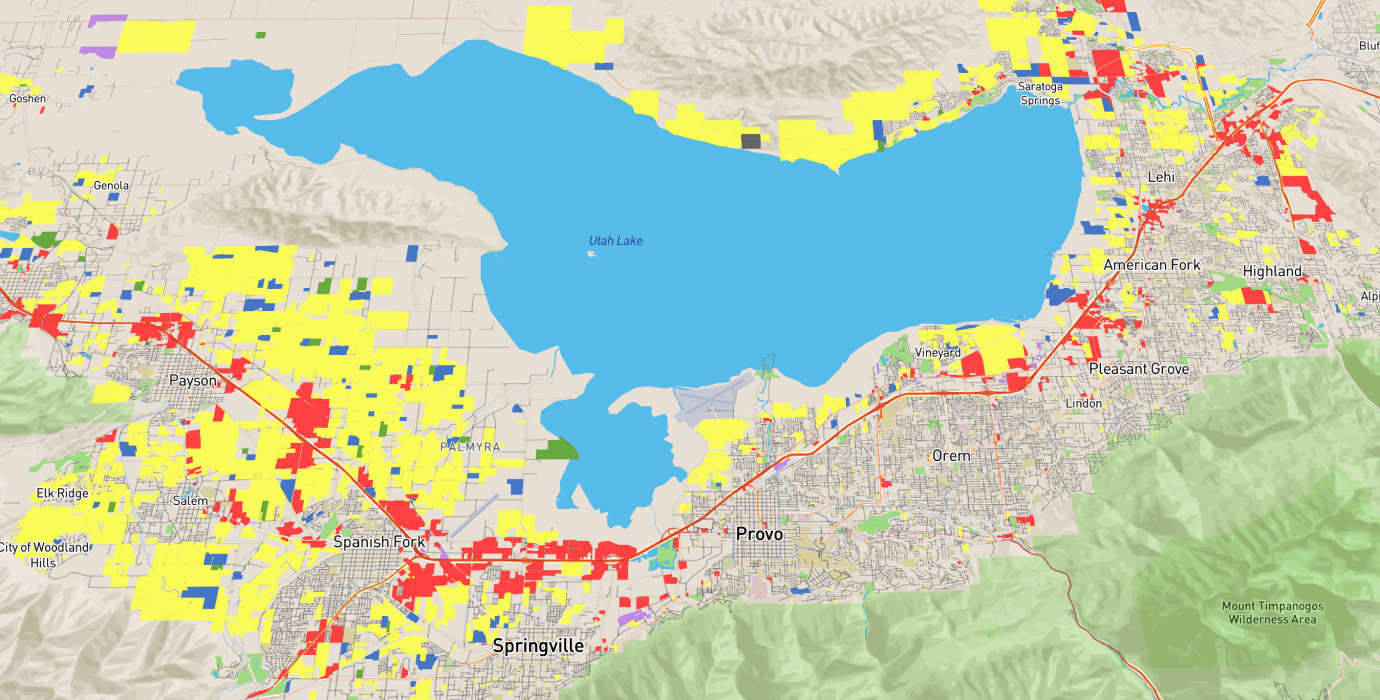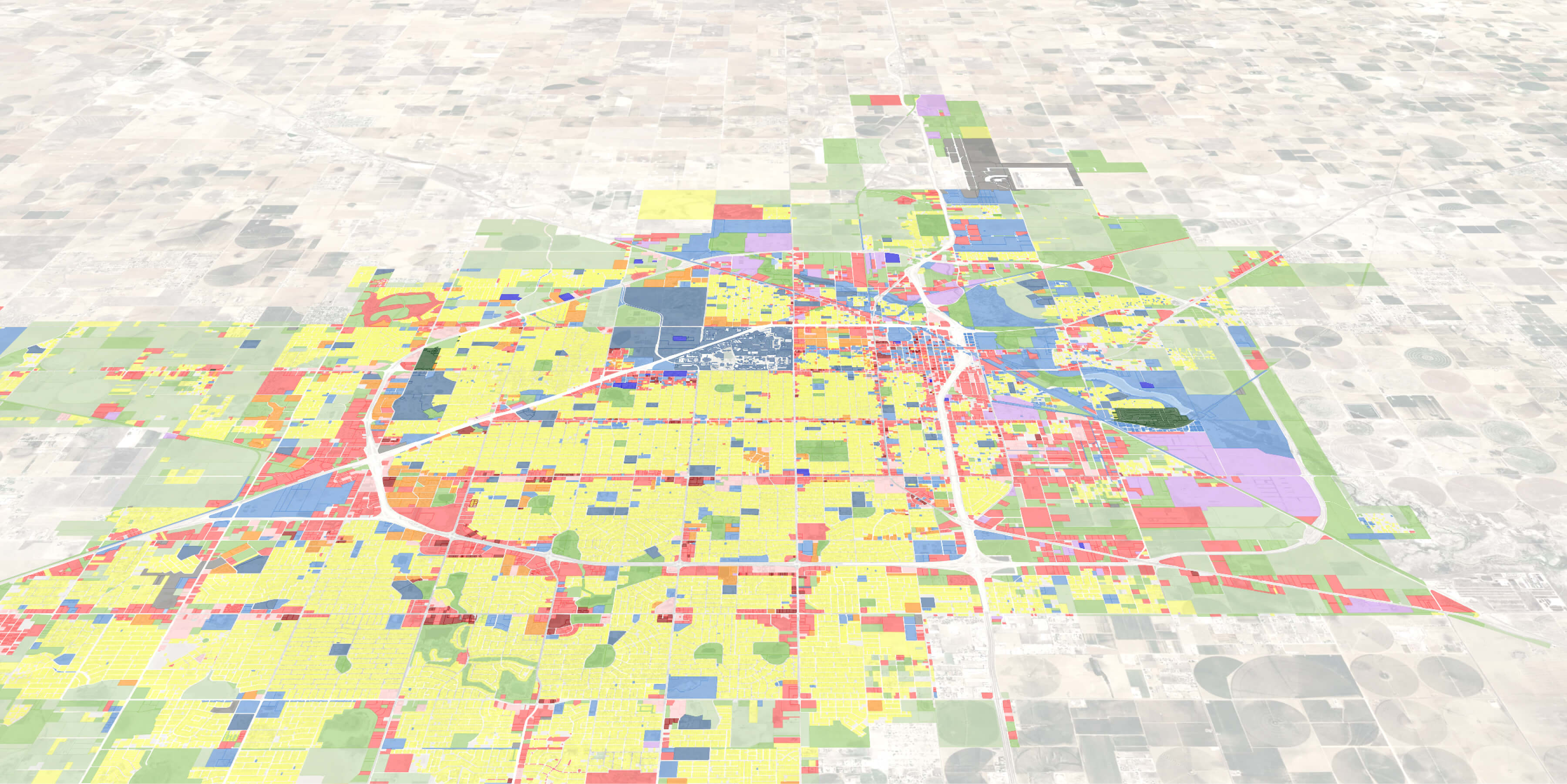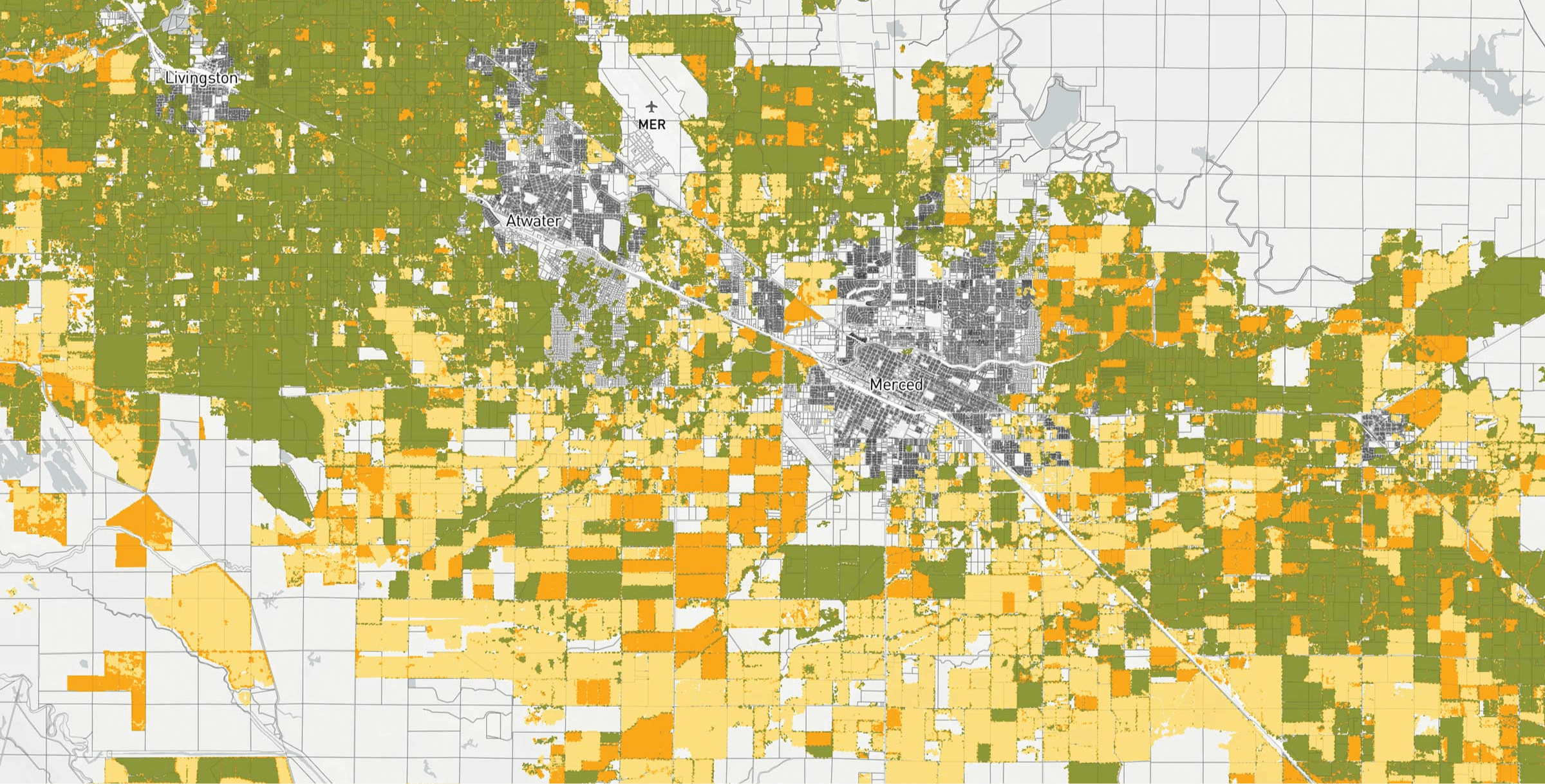Navigating complex challenges
Despite remaining largely stable for nearly a century, DLC’s infrastructure was understandably showing signs of deterioration and age. To build long-term resilience, DLC’s infrastructure needs modernization such as converting 4 kV substations to higher-capacity 23kV substations. Staff required a game plan for eliminating these obsolete assets, while strategically planning for the future.
Simply looking at typical engineering-oriented indicators such as the age and capacity of assets to prioritize upgrade investments may have worked in the past, but DLC’s vision for the future included prioritizing community planning and advancing equity in addition to improving their infrastructure.
To do so effectively, leadership at DLC set out to assess infrastructure in the context of the community it served and the surrounding environmental factors, all together from a holistic view. Knowing how these complex factors relate to each other would guide DLC in making strategic decisions more effectively, communicating progress to stakeholders, and ultimately securing their buy-in.
DLC’s journey to UrbanFootprint
Like all utilities, DLC did not have endless capital to spend on grid improvement projects. DLC had an annual budget that needed to be distributed across a variety of competing priorities. In a perfect world they would be able to take on all of the initiatives but, company leadership knew they needed better data to inform where they act first. Grounded in their data-centric culture, DLC began the hunt for a new solution that could support them in their strategic pursuits. DLC was attracted to UrbanFootprint for the unique and holistic view of infrastructure, climate, and people. UrbanFootprint became the clear partner to help them modernize their systems and approach to community and infrastructure planning.
UrbanFootprint’s Grid Resilience Insights, part of the Adapt solution suite, was the solution chosen to help DLC navigate its challenges. The solution integrates data on infrastructure, climate hazards, population exposure and vulnerability into a composite assessment of a community’s resilience to grid-asset disruption or failure, enabling DLC to account for the characteristics and vulnerabilities of its service population while making grid upgrade decisions.
Adapt: finding signal amidst changing dynamics
Holistic Asset Ranking. Prior to UrbanFootprint, DLC was targeting substations for replacement based entirely on their age, condition, and capacity. Now, for the first time, DLC staff is able to approach the prioritization process holistically, assigning to every substation a composite score, which is the product of criteria on infrastructure as well as natural hazards, community exposure, and population vulnerability. Based on its score, each substation is ranked relative to the others, providing a varying degree of prioritization to enable a deeper perspective of what becomes a higher priority to replace or repair. As a result, the DLC team has gained a more nuanced understanding of which substations pose the highest risk to communities and the broader grid, in contrast to the previous approach based only on engineering characteristics.
Comprehensive Data Validation. DLC is also able to validate the information about its assets with more comprehensive data. Prior to using the solution, utility staff were limited by the amount of information they were able to provide to colleagues and customers about a certain asset, such as a circuit or substation. With the data insights that UrbanFootprint has provided, staff can now investigate customer complaints more thoroughly and from a much more holistic perspective. As a result, internal teams have begun using data in entirely new ways, which has helped to create a better understanding of risk across the entire DLC team. Layering socio-economic and natural hazard information on top of engineering characteristics and other asset information, DLC is now able to gain deeper insights and communicate more effectively.
To be able to talk about your projects with data concretely attached to it is very powerful … UrbanFootprint [enables us to] access data and a new way to slice that data. Anything can become visual very quickly, so you no longer have one group strapped to a GIS model.
Elizabeth Cook, General Manager, Advanced Grid Solutions, DLC
With UrbanFootprint, DLC has mapped out their assets, paying particular attention to those that directly serve significant portions of community members and businesses. Of those substations, utility staff further leveraged Grid Resilience Insights to establish which have experienced storm impact and which are at risk of FEMA Flood Hazards.
Staff have now been able to generate a clear list of assets that are newly identified as a high priority for replacement, adjusting previously established rankings based only on engineering characteristics. In addition to establishing this new ranking, DLC’s process of identifying high-priority substations is now substantially more rapid and efficient, completed in just one day rather than the 30 days it had taken with previous manual methods.
Efficient Stakeholder Communication. Intuitive visualization of grid assets has also improved dramatically for the company, with the solution’s efficiency in generating map imagery for internal stakeholders. Before using UrbanFootprint, staff spent an inordinate amount of time manually creating maps with little data attached. In meetings, disagreements over the data wasted precious time and making any changes to presentations that featured maps delayed decision making. Now, staff can zoom into specific areas of interest and surface information from the platform in real time. Where this process to update map imagery once took over 30 days, UrbanFootprint now enables DLC teams to accomplish the task in just two hours.
In the past, we would take a snippet from GIS, put it in PowerPoint, collect a bunch of data, try to reformat it, and [it would end up taking] hours. With Adapt, we can snip information immediately from the platform exponentially faster than anything we’ve ever done before.
Elizabeth Cook, General Manager, Advanced Grid Solutions, DLC
With visual assets that can be updated in real time, discussions on risk identification are more productive and data-driven. UrbanFootprint helps empower conversations across various parts of the organization and opens up a new way of thinking about system planning.
UrbanFootprint gives me the necessary tools to bring into meetings and show prioritization visually, empowering open discussion with all relevant stakeholders—asset management, real time-operations, field ops planning—and achieve buy-in in real time.
Elizabeth Cook, General Manager, Advanced Grid Solutions, DLC
Establishing a roadmap to the future
Evaluating their grid has just been the first step in DLC’s steps toward modernizing their infrastructure. The ability to quickly create visual communication from data insights has also given DLC a documented approach to ESG-type engagements, enabling them to identify areas in the community to reduce energy burden, improve sustainability efforts, and target renewable energy deployment.
It gives us layers of opportunity to create new services and products instead of traditional planning. It’s giving us the ability to look at communities holistically.
Elizabeth Cook, General Manager, Advanced Grid Solutions, DLC
Today, DLC is working with UrbanFootprint to build a similar data-driven process to identify energy burdens in the communities they serve, to drive coordinated and equitable service.
As organizations and utilities think about the complexity of increasing natural hazard events and growing social inequities, being able to see how different factors fit together is crucial. With new perspectives obtained from more comprehensive data insights, organizations can better prioritize projects and future investments just like DLC.
All utilities have a complex process of which capital gets spent and where. Instead of making it more about the squeaky wheel or reactive planning, we can create the insights to preemptively invest in areas that typically do not come to the top of the list.
Elizabeth Cook, General Manager, Advanced Grid Solutions, DLC
While culture change and change management can be challenging, UrbanFootprint gives organizations an opportunity to think differently. User friendly and easy to implement, “UrbanFootprint gives us a huge data intelligence advantage that all members of our team can understand. Instead of the really verbose, expensive asset-health models that are out there, UrbanFootprint is the perfect first step to get you moving quickly toward building grid resilience.”






